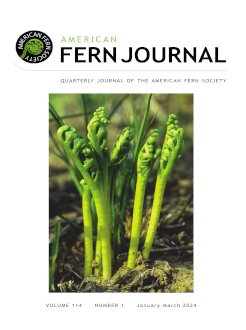I review the history of my work on moonwort ferns, genus Botrychium, beginning with my early discovery of biology as a profession and the importance of mentors and networks of professional researchers in the development of my interests in biology. I discuss my initial work on discovery of new species of Botrychium and the utilization of enzyme electrophoresis as an early methodology for establishing species' individual genetic characterization and their relationships among species, emphasizing the importance of codominant nuclear markers for detection of allopolyploid parentages. I review the unusual predominance of allopolyploidy in Botrychium and discuss possible reasons for this relative to breeding systems, and describe a new pathway for overcoming hybrid sterility without polyploidy. I discuss the inadequacy of wind as a universal dispersal mechanism in Botrychium, and suggest avian dispersal as an under-appreciated spore dispersal mechanism. Throughout I note unresolved issues of Botrychium biology and suggest areas of needed research. Lastly, I discuss the unique characteristics of Botrychium that have allowed this lineage to persist through universal ecological disruptions and massive extinctions and compete successfully in modern ecosystems, and the morphological similarities of its descendants to early land plants.
How to translate text using browser tools
1 March 2024
Why Botrychium? A Case Study of Moonwort Madness
Donald R. Farrar
ACCESS THE FULL ARTICLE
<
Previous Article
|

American Fern Journal
Vol. 114 • No. 1
January-March 2024
Vol. 114 • No. 1
January-March 2024
biography
dispersal
mycorrhizal biology
Ophioglossaceae
polyploidy




